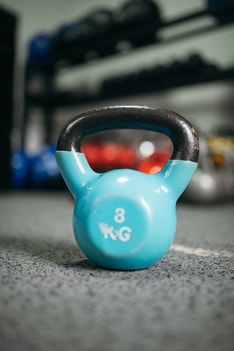 Did you know that there are only 27 evidence-based practices (EBPs), otherwise known as ‘things are have a lot of proof behind them that they really work’ in helping people with autism (Wong, 2016)? As an educator involved in the field of inclusive education and as a parent working to support my own kiddo, I am all about finding what really works. If you make the mistake of googling how to help people with autism, you will NOT have the time to wade through the millions of ideas and suggestions that will pop up. Each month, I plan to highlight one of these 27 EBPs for you. Last month, we delved into the use of visuals and this month we will look at the EBP of using exercise in a therapeutic way. Firstly, why use exercise as an intervention? Research proves it can help with:
Honestly, before I studied this in more depth, physical fitness was the only benefit I had considered on my own: the obvious mind/body connection, the endorphins improving mood, taking a stroll for a time out or break to decompress. It turned out to be so much more! Desired/appropriate behaviors to target might include:
When developing an exercise plan, it is important to ensure that a team has helped create an appropriate plan whether it be taking into consideration physical limitations, OT concerns, health needs in general, the person’s interests/abilities/strengths, access to equipment (home or community center/pool), hygiene considerations, choice, cost, etc. Once these are considered, it is time to make a plan! Will it be a single activity or series of activities? How long? How often? Develop a routine based on time and location and get started…. Teach the Learner the Routine
Reinforcement (reward, praise, celebration) may be necessary, especially in getting the participant fully involved or even feeling positive about the exercise. Let’s get real here...I may need a bit of an extra push or reason to get myself moving too! Aspects of the Routine that may require Reinforcement
Please remember this does NOT have to take place solely inside or at a gym environment but outside play/exercise has known benefits as well. Nature itself can have a positive impact. The more time we spend in a natural setting, the greater ability to focus and concentrate. Even 20 minutes of exercise on a tree-lined street can improve symptoms. Exposure to outdoor activities can help kids (or adults) recover from symptoms like attention fatigue and increase patience and impulse control. This strategy has the research behind it but also the common sense understanding that moving around makes most people feel better. The endorphins and other health benefits are generally understood, but typically, we do not make it our first ‘go-to’ idea. Speaking both professionally (seeing this work wonders for kiddos already in my schools) as well as personally (at home with my own child and even me), this is one strategy that can begin to make a difference much sooner than later. Try it out! Note: If you have more interest in the topic, this fifteen-minute documentary highlights an initiative in Saskatchewan that tried exercise as a strategy with great results (not directly autism related however): Brain Gain – short CBC documentary
0 Comments
Leave a Reply. |
Filter Posts by Topic
All
AuthorCarmen has been published in a variety of online and print articles. Writing is a passion and she strives to grow and share her message. |
Photos from shixart1985 (CC BY 2.0), JLaw45, Goat Tree Designs, osseous, wuestenigel, shixart1985

 RSS Feed
RSS Feed